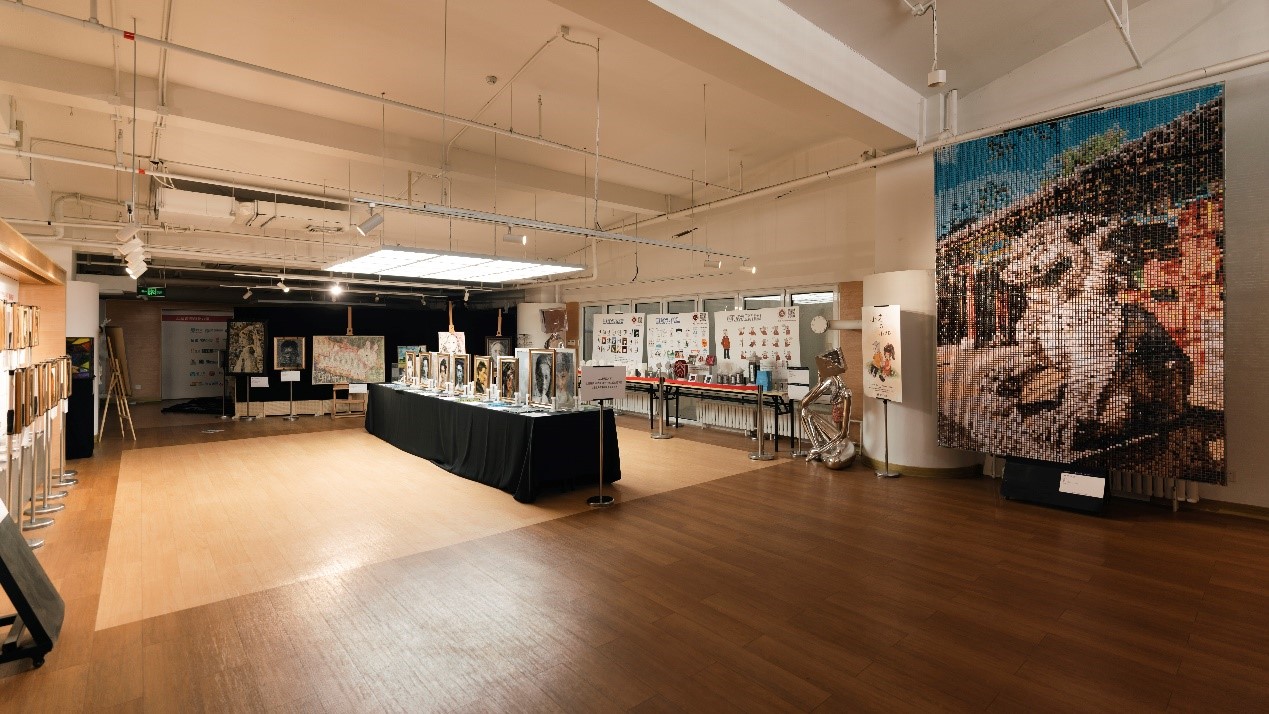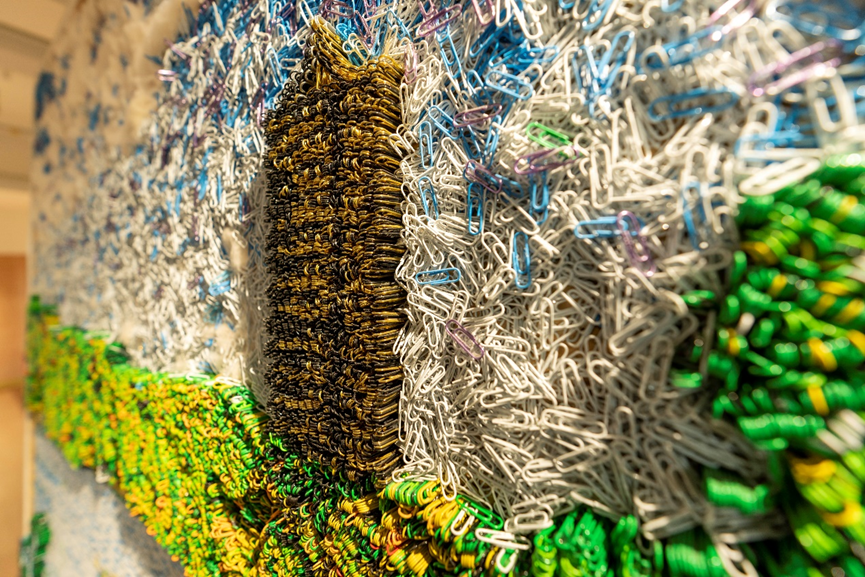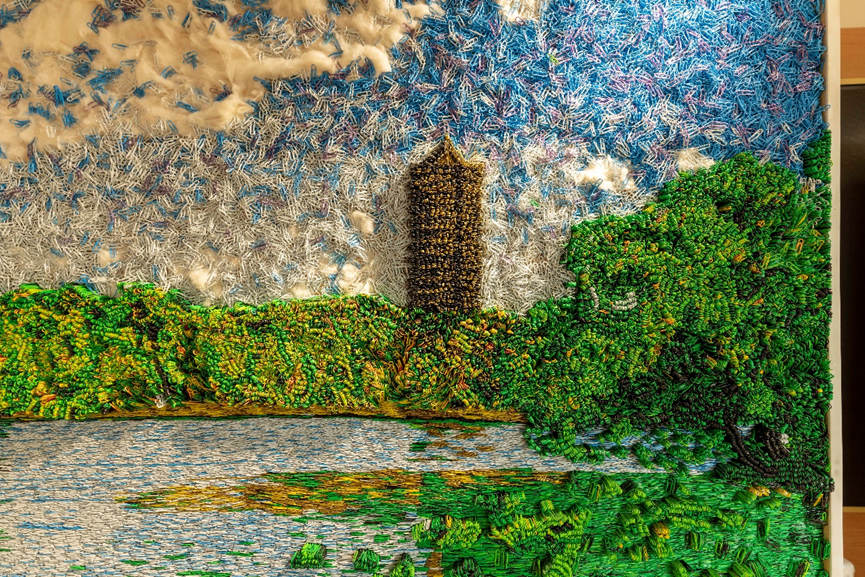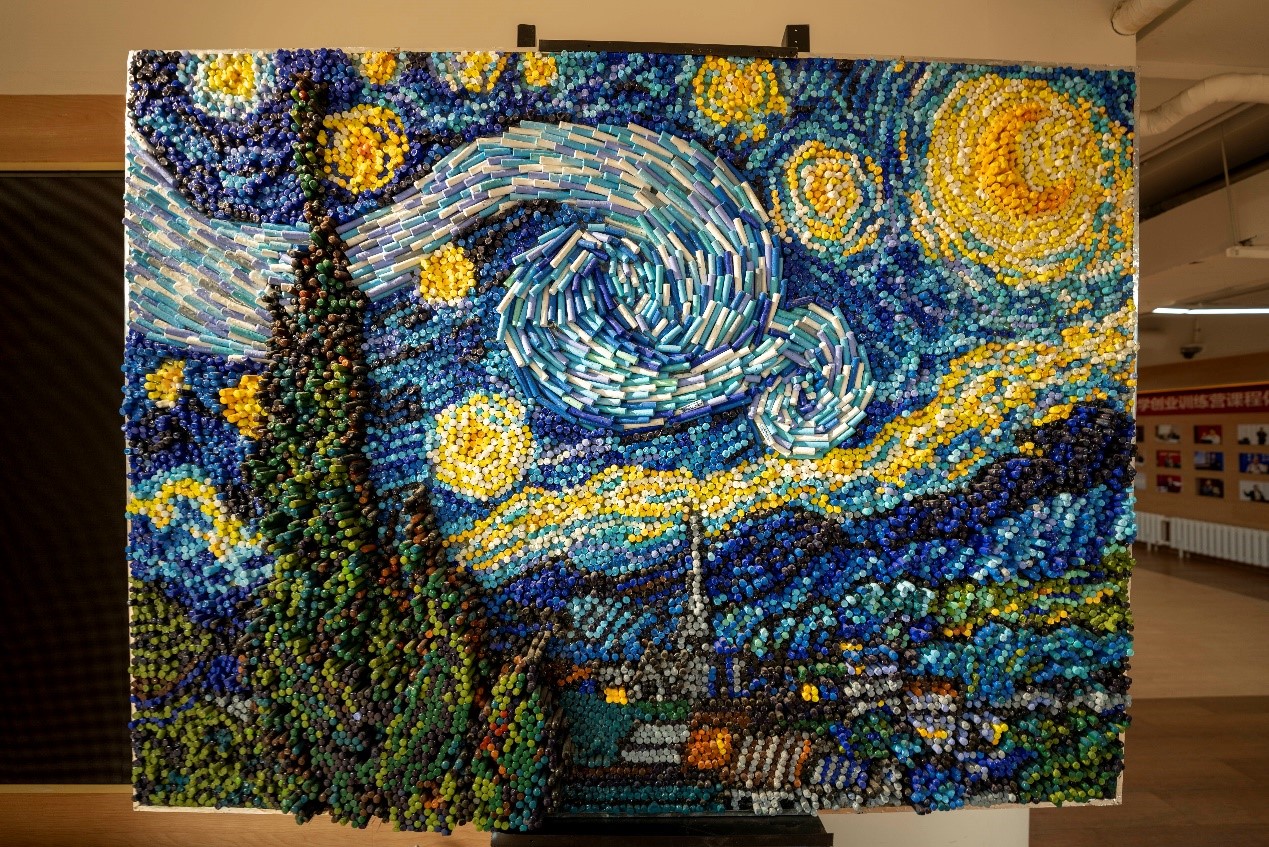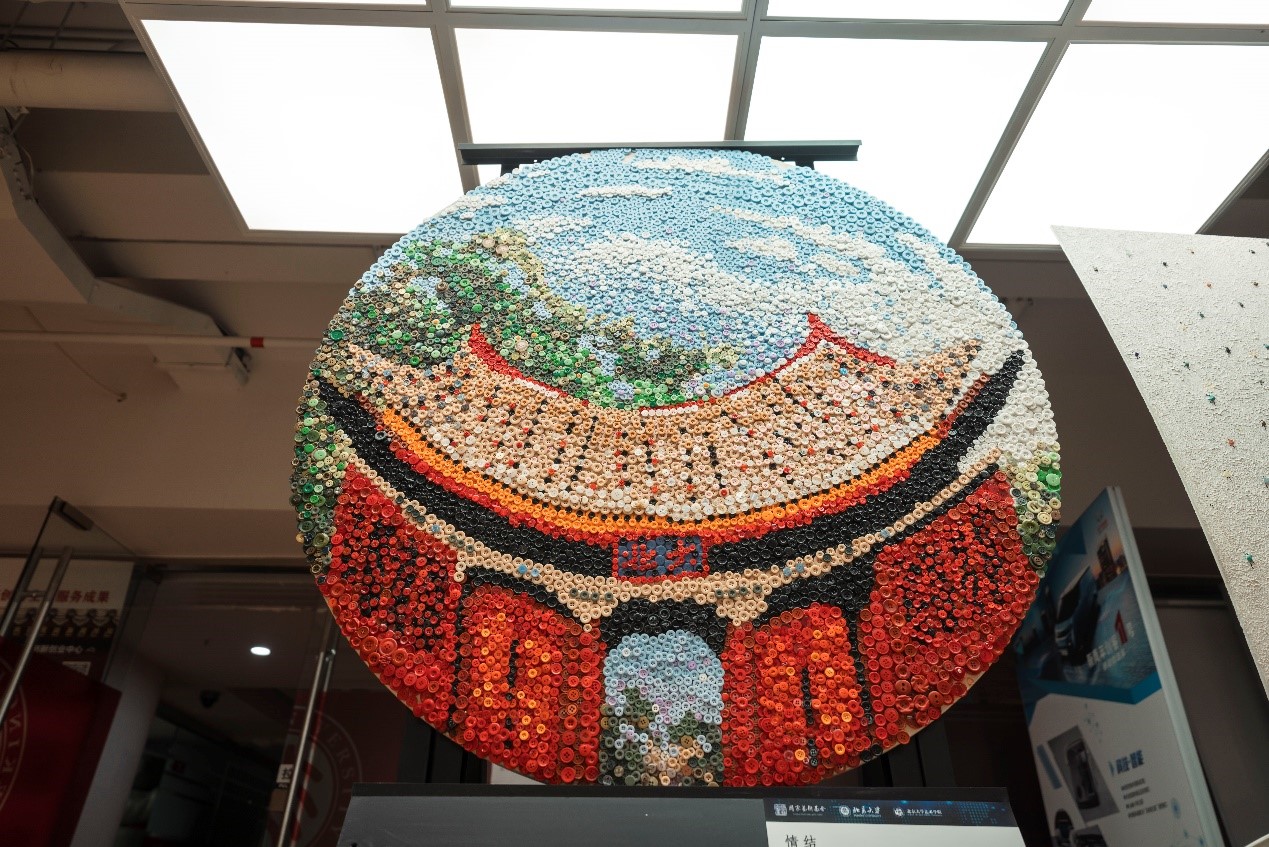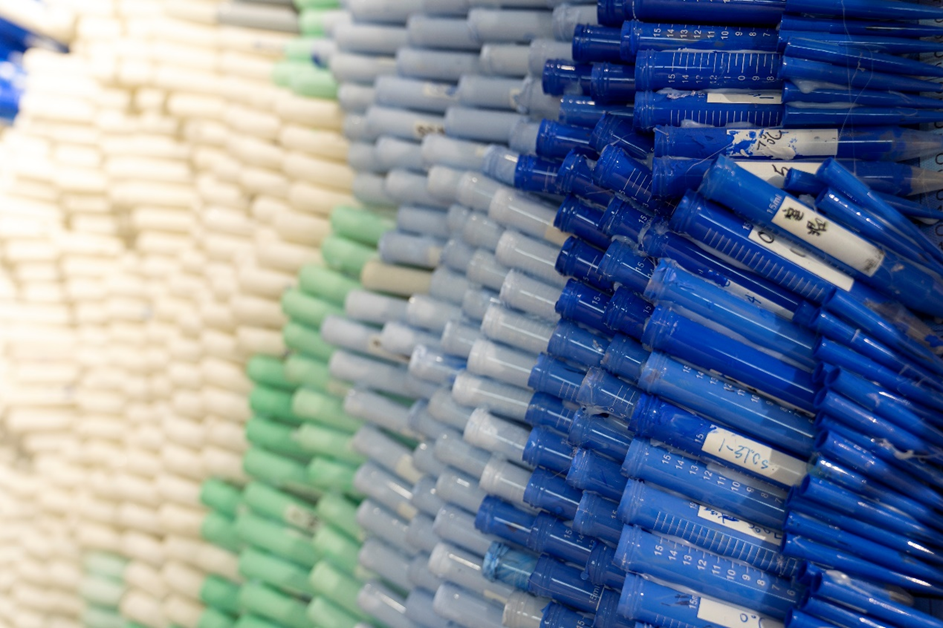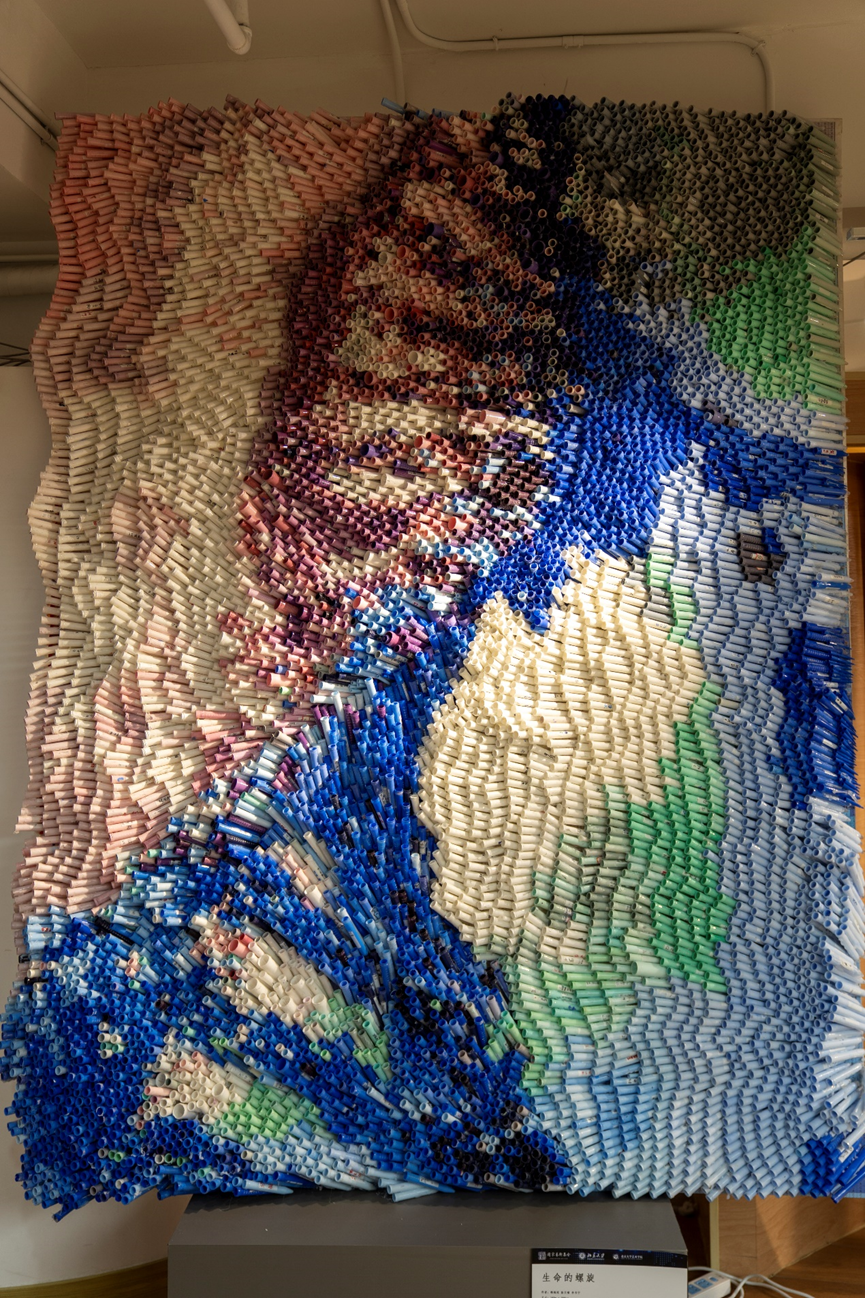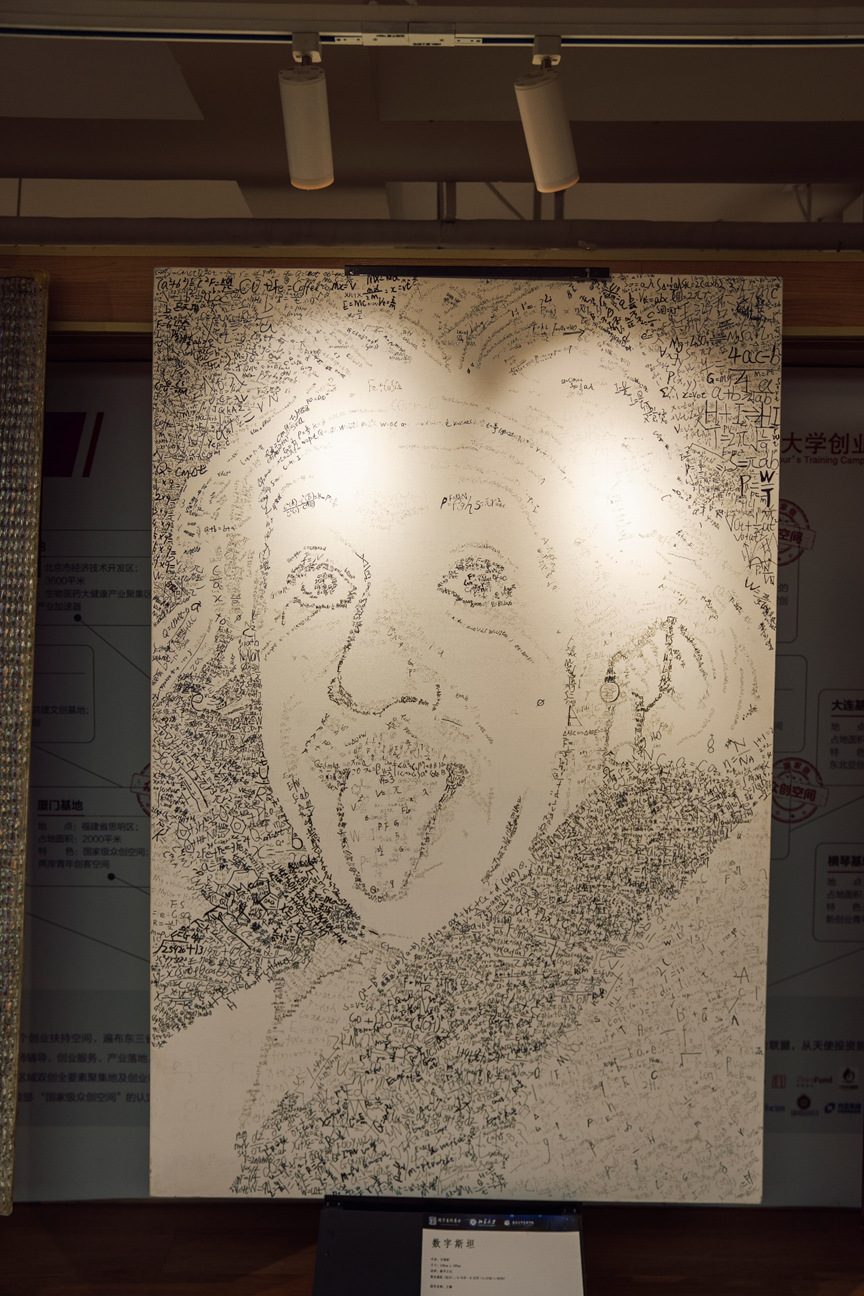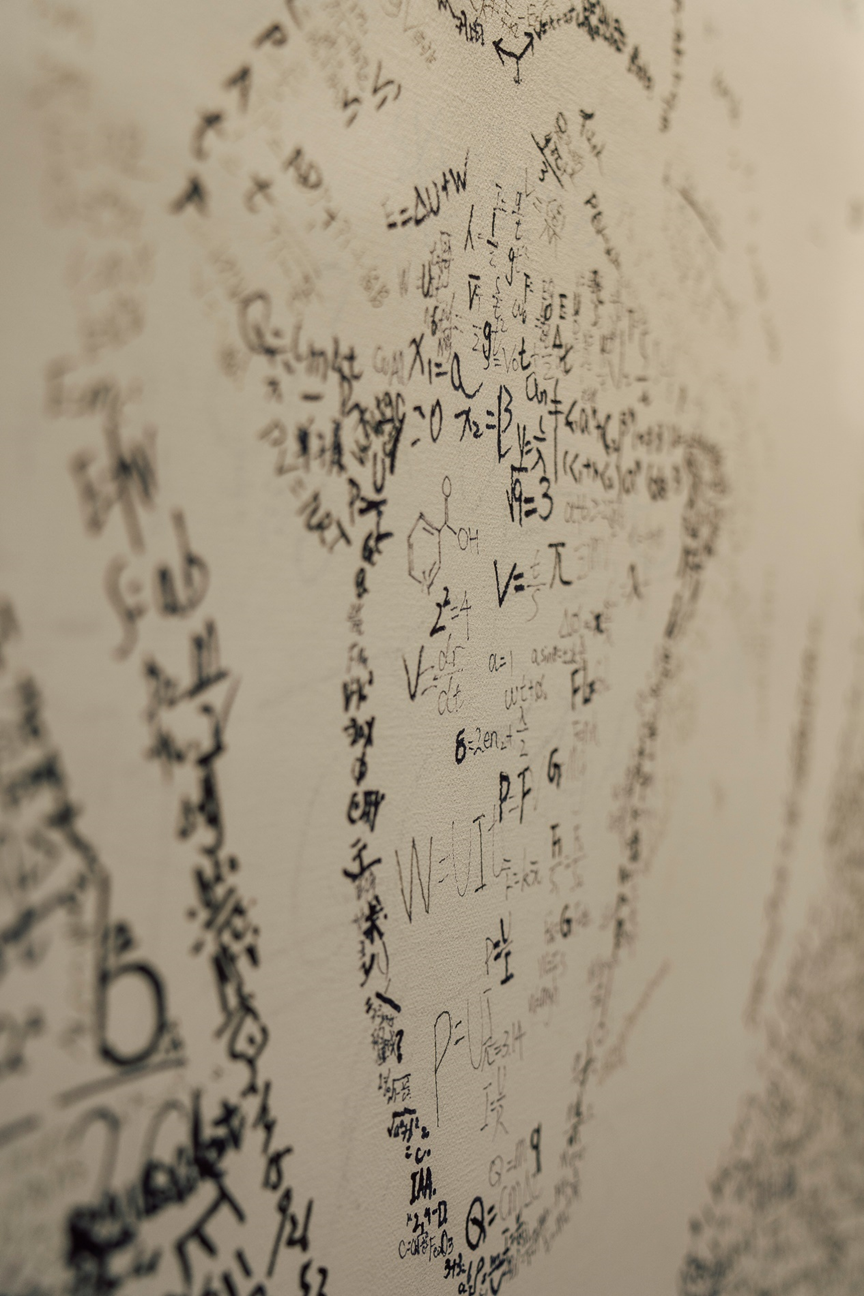One Particle, One World - Peking University Particle Art Exhibition kicks off
Apr 06, 2023
Peking University, April 6, 2023: The "One Particle, One World - Peking University Particle Art Exhibition" national tour has been launched as part of the National Art Fund Communication and Promotion Funding Project. The exhibition, which is being held at the Peking University Global Student Innovation and Entrepreneurship Center, will continue until mid-to-late April, offering art enthusiasts an opportunity to immerse themselves in the unique world of particle art.
The Particle Art concept, developed by Peking University's School of Arts, focuses on theoretical research and the creation of artworks. Using life experience, social issues, and life philosophy as artistic backgrounds, the creative courses interpret the relationship between humanity, society, and nature. The approach involves deconstruction and reconstruction of ideas into realistic art pieces. Particles used in the art pieces range from cosmic planets to tiny cells and can be made of any material. The art forms can be two-dimensional patterns, three-dimensional sculptures, experimental images, or interactive installations, and the forms are not limited, depending on the author's ability to express their thoughts.
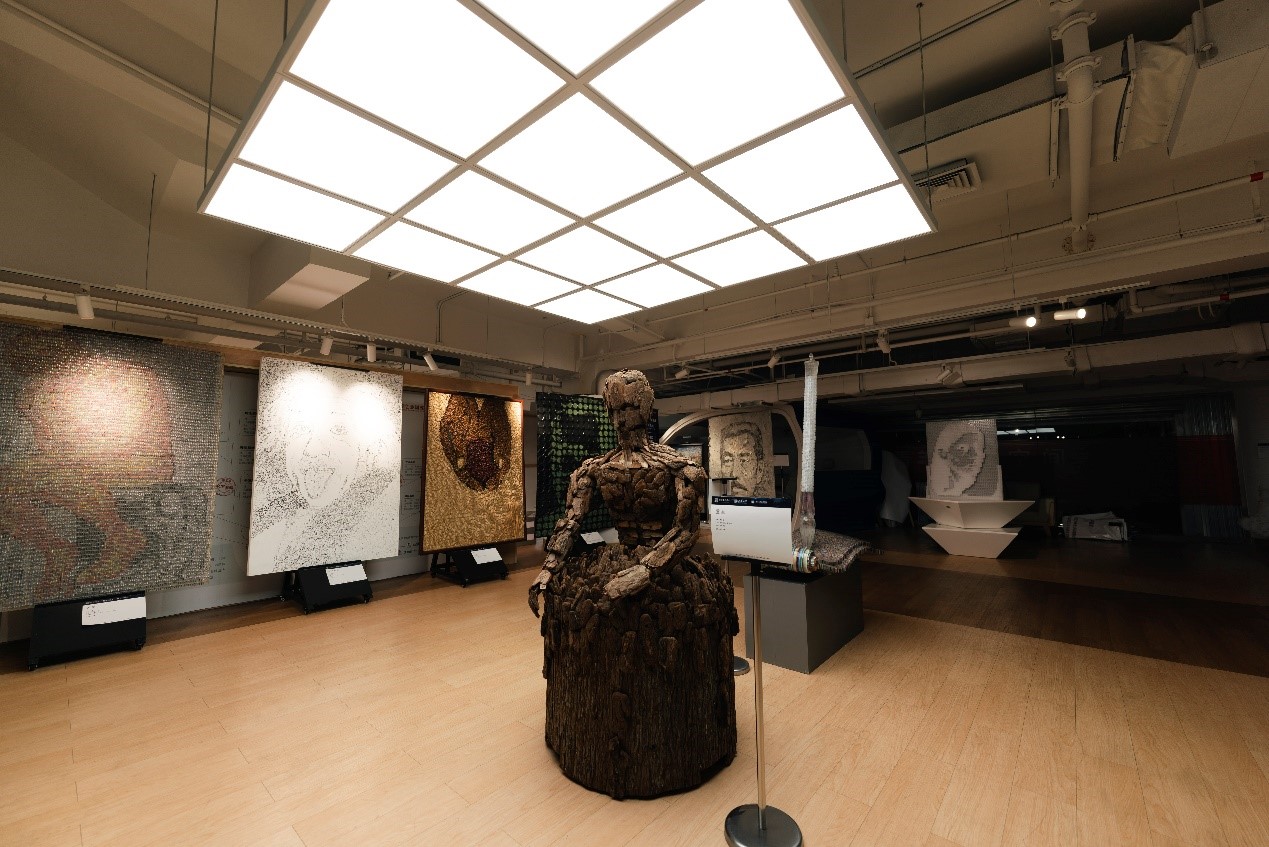
The objective of the Particle Art Laboratory is to make beauty education accessible to everyone, without technical barriers, artistic trends, or myths of geniuses. The works exhibited are the result of collaboration among more than 60 students from different majors at Peking University, and the focus is not on special technical skills or the invention of new and unique artistic styles. Rather, the aim is to use life as inspiration, looking for particles that are common but essential to life for their creation. The materials used in the exhibits are familiar, as Particle Art aims to allow anyone to use any material to create beauty and make discovering beauty in everyday life a way of life for a generation.
The exhibition features two halls. Hall 1 showcases Particle Art Lab's exploration of the particle-ization of daily material elements, while Hall 2 displays the development of the more modular "Particle Cube" based on audience demand. Hall 1 is a persistent method of beauty education for the lab, guiding participants to transform everyday objects into beauty. The most important part of the process is not the final product but the experience of life when faced with difficulties and still not giving up the pursuit of beauty. Hall 2 introduces computer programming to image generation and gradually deepens efforts to create human-machine co-created art, demonstrating Particle Art Lab's commitment to beauty education for everyone in the digital art era.
Let's take a virtual stroll through the exhibition!
△ <Frozen PKU>
The artwork is a picture made out of paper clips that represents the power of unity. Each paper clip symbolizes an individual with limited abilities, but when they come together, they can create limitless possibilities and achieve great things. The artwork aims to inspire people to work together and unite their efforts to achieve their goals.
△ <Cai Yuanpei>
The portrait of Cai Yuanpei, former president of Peking University, is made entirely out of newspaper clippings. Each letter and word serves as a unique particle that, when combined and enhanced with color, creates a stunning and meaningful work of art.
△ <Starry Night>
The well-known Starry Night is recreated with modern tools and oil pastels, paying tribute to Vincent Van Gogh's masterpiece. Inspired by the abundance of blue oil pastels gifted by the manufacturer, this piece captures the imagination of the night sky.
△ <The Complex>
Complex, a psychological term, refers to a strong impulse hidden deep in one's heart. This artwork, The Complex, features the iconic West Gate of Peking University, a symbol of many PKUers’ strong emotional attachments to the institution. Using buttons as the medium to connect the particles together, the artist expresses their love and tribute to this beloved place, a shared complex for countless students.
△ <Spiral of Life>
Biology is a special subject that studies both the macroscopic appearance and the microscopic inner logic of living organisms. Accordingly, there are many macro and micro experiments. DNA double helix is an important component that inherits life and is also one of the great discoveries of modern biology. Using this as a template and connecting it with the materials used in biology experiments (ultimately using test tubes as the basic unit), this artwork was created. All materials are reused, promoting the idea of sustainable development and advocating for environmental protection.
△ <Meeting Marilyn>
Inspired by Andy Warhol's iconic Marilyn Monroe piece, this work combines pop art and laser elements to create a dynamic and colorful portrayal. After experimenting with different materials, I discovered the perfect match in laser sequins, which reflect different colors and light depending on the angle. The use of over 21,600 nails and 43,200 laser sequins, combined with a high-transparency acrylic panel, creates a stunning effect when illuminated. It took me two months to complete this piece, but the result was worth the effort.
△ <Digital Einstein>
This artwork is the second piece in the particle art collection. It is composed of formulas from the subjects of math, physics, and chemistry, collected from 300 students who wrote them randomly on the street. These formulas were rearranged and reconstructed to form the image of Albert Einstein. The background consists of random formulas also written by passersby, which were later rearranged and white-washed to complete the piece.

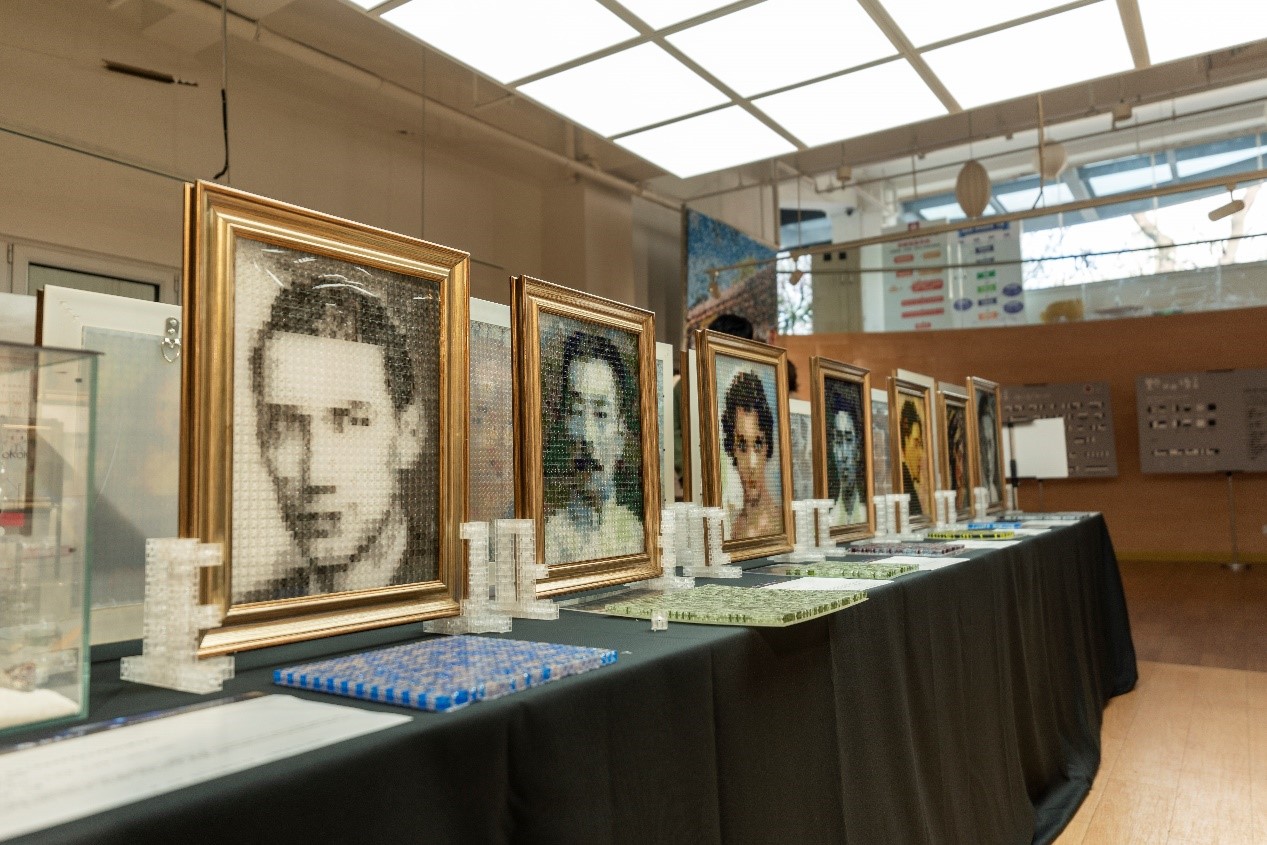 Written by: Lean Zhi Xuan
Photos by: Lean Zhi Xuan, Zhu Chengxuan
Edited by: Dennis Meng
Written by: Lean Zhi Xuan
Photos by: Lean Zhi Xuan, Zhu Chengxuan
Edited by: Dennis Meng
